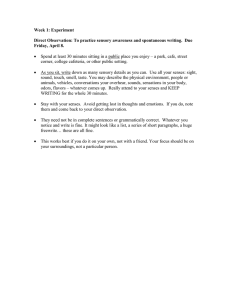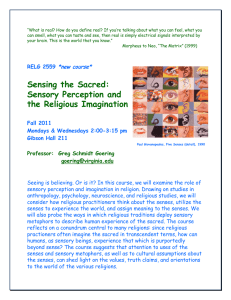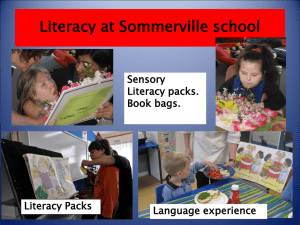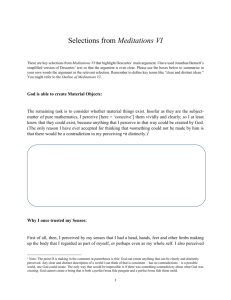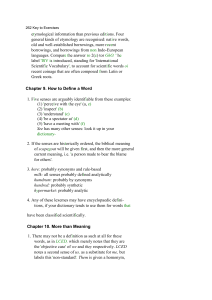IDEAS Activities
advertisement
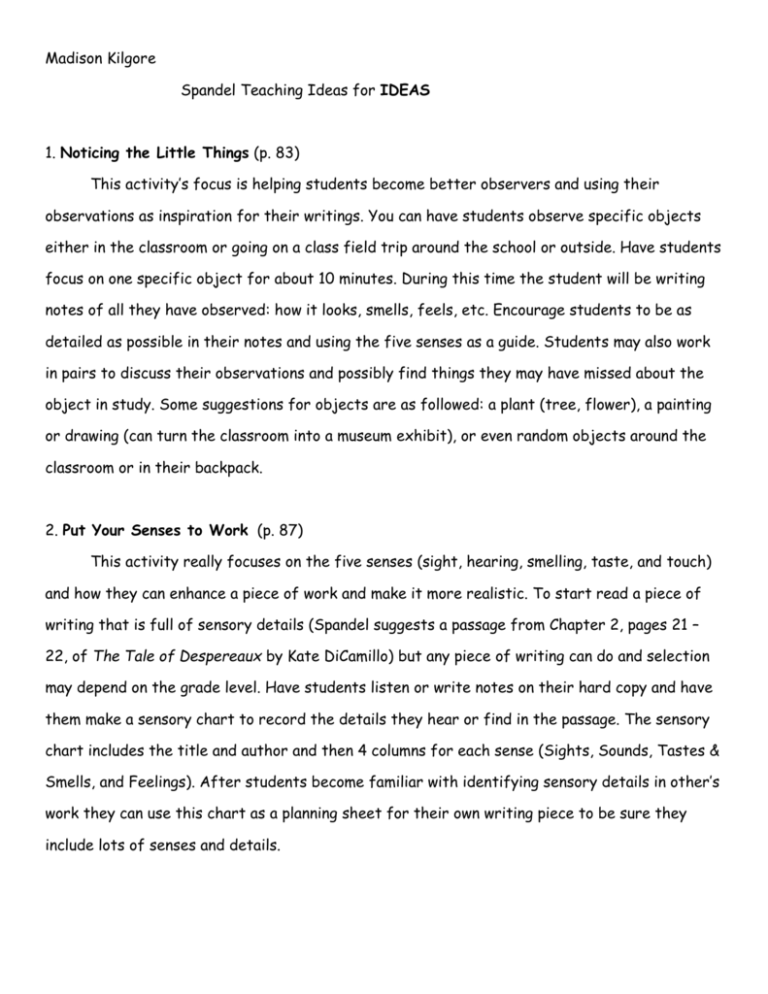
Madison Kilgore Spandel Teaching Ideas for IDEAS 1. Noticing the Little Things (p. 83) This activity’s focus is helping students become better observers and using their observations as inspiration for their writings. You can have students observe specific objects either in the classroom or going on a class field trip around the school or outside. Have students focus on one specific object for about 10 minutes. During this time the student will be writing notes of all they have observed: how it looks, smells, feels, etc. Encourage students to be as detailed as possible in their notes and using the five senses as a guide. Students may also work in pairs to discuss their observations and possibly find things they may have missed about the object in study. Some suggestions for objects are as followed: a plant (tree, flower), a painting or drawing (can turn the classroom into a museum exhibit), or even random objects around the classroom or in their backpack. 2. Put Your Senses to Work (p. 87) This activity really focuses on the five senses (sight, hearing, smelling, taste, and touch) and how they can enhance a piece of work and make it more realistic. To start read a piece of writing that is full of sensory details (Spandel suggests a passage from Chapter 2, pages 21 – 22, of The Tale of Despereaux by Kate DiCamillo) but any piece of writing can do and selection may depend on the grade level. Have students listen or write notes on their hard copy and have them make a sensory chart to record the details they hear or find in the passage. The sensory chart includes the title and author and then 4 columns for each sense (Sights, Sounds, Tastes & Smells, and Feelings). After students become familiar with identifying sensory details in other’s work they can use this chart as a planning sheet for their own writing piece to be sure they include lots of senses and details. 3. Revise Fuzzy Writing (p. 88) This activity involves taking a simple sentence and then rewriting it to include more detail and get rid of the vagueness of the original sentence. The book gives an example sentence and revision to do with your students. Have the students start with a sentence (either one you give to them or one of their own) that is vague and has little to no detail: “I went to the store and bought milk” Then have students revise it and create a vivid description of the scene – encourage them to use their “binoculars” to really zoom in on details, see this start to revising the “blurry sentence” : “Cold air meets my face as I walk into the frenzy of colorful food, squeaky carts, and distraught mothers checking their lists over and over again. It’s hard to find my way as shelf after shelf, with its bright labels and guarantees, distract my attention and draw me into adding more colorful boxes to my cart. By the time I have adjusted to the goose bumps and cold air on my skin, my fingers turn blue as a reach for the cool metal handle between me and the last gallon of chocolate milk.” This activity is good practice for students before doing revisions to bigger pieces of writing and allows them to elaborate and add detail in their own way. Source: Spandel, V. (2013). Creating writers, 6th ed. Boston: Pearson
